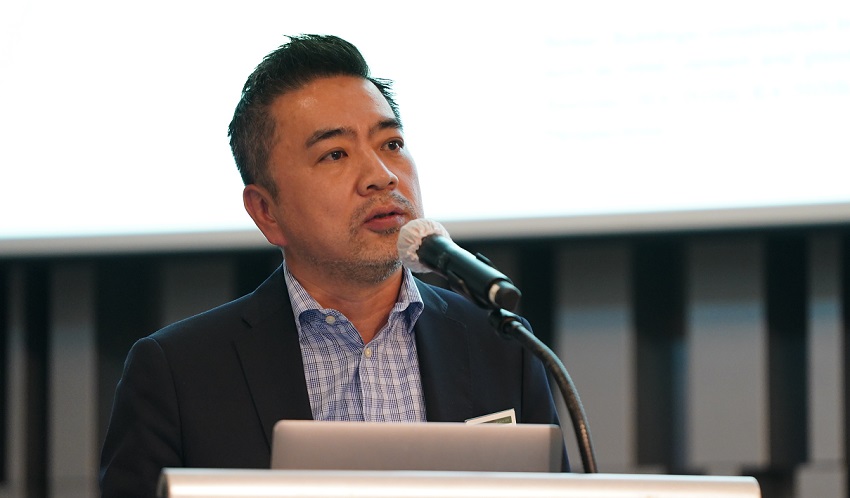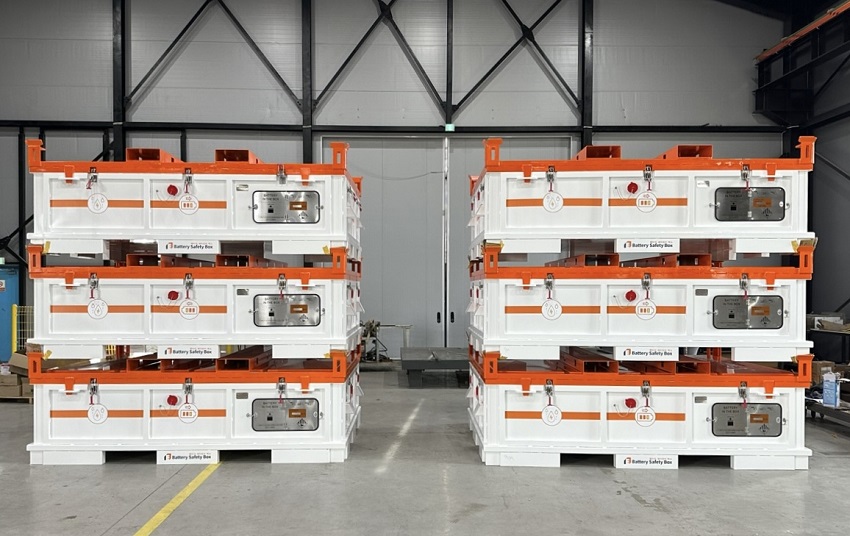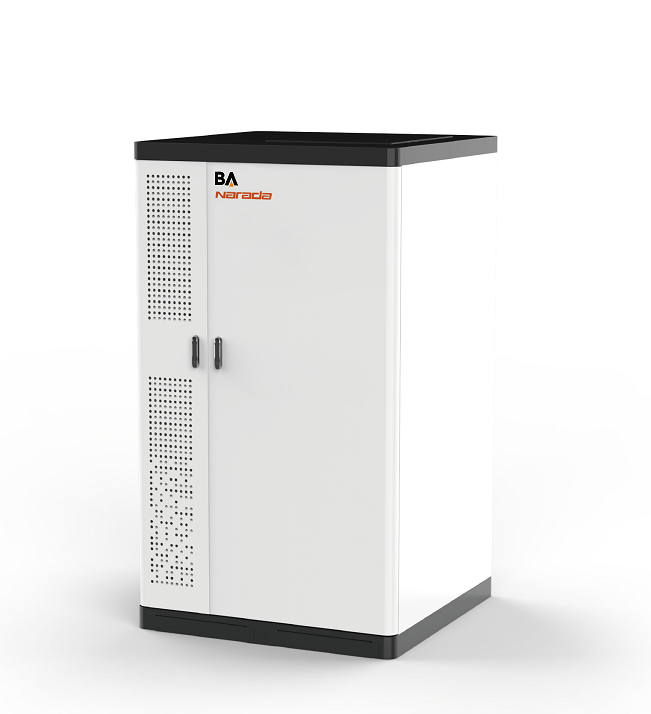배터리 안전관리시스템(SMS) 통해 이송, 보관 분야 시장 선도 …LFP BESS 시장 확보할 것
최근 리튬배터리 공장(경기도 화성) 폭발 사고와 아파트 주차장(인천 청라아파트단지)의 전기차 폭발 사건 등으로 배터리 화재에 대한 관심이 급증하고 있다. 배터리 화재는 특성상 대형사고로 이어지는 경우가 많아 국민들의 공포심과 경각심이 커져가고 있다. 이에 업계와 정부는 배터리 안전관리 대책마련에 골머리를 앓고 있다.
안전관리시스템 전문기업, 비에이에너지 USA 진양석 대표이사와 함께 그 고민을 함께해 보았다.
제시하고 있는데 배터리 주위의 환경 데이터 값에 대한
모니터링과 데이터 누적을 제공합니다.
또 배터리 장치의 설치 환경에 따라 수집할 수 있는
데이터도 별도로 설정합니다. 안전 임계값 또한 당사의
빅데이터를 기반으로 설정하여 위험이 발생하기 이전,
예비 알림을 통해 빠른 점검을 안내하고 있습니다.”
대중적으로 사용하고 있는 리튬이온배터리는 화재가 날 수 밖에 없는 구조입니다. 산업 트렌드가 선이 없는 이동성과 어떻게 하면 오래 사용할까, 라는 것에 초점을 맞추다 보니 모든 산업에서 과거보다 배터리가 적용되는 사례 자체가 많아지고 있습니다. 이에 전기차, BESS와 같은 배터리를 제외하고도 선풍기, 핸드폰 등 무선으로 사용하는 제품 중 배터리가 들어가지 않는 곳이 없습니다. 사용량, 사용 횟수 자체가 많다보니 그 수도 비례해 증가하고 있다고 볼 수 있습니다.
문제는 배터리에 화재가 발생할 시 순식간에 번지고 진압이 어려워 위험성이 크다는 점입니다. 하지만 배터리가 무조건 위험하고 나쁜 것은 아닙니다. 안전하게 사용하기 위해 제조 업계에서 불량률을 낮추기 위한 연구개발을 하고 있고, 비에이에너지와 같은 안전관리 업체가 적절한 관리 체계를 마련, 정부에서 이를 표준으로 제정해서 운영할 필요성이 있습니다.
배터리 화재 원인을 한가지로 꼽기는 어렵습니다. 배터리 내부 결함과 같이 제조 결함일 수도 있고 충격, 잘못된 운용 방식(과 충·방전), 환경(온·습도)과 같은 외부 요인일 수도 있습니다.
원인을 찾아 해결하는 것도 중요하겠지만 내부 결함같은 경우에는 제조사에서 기술 개발을 통해 해결하면 되는 것이고요. 사용하는 측면에서는 이미 우리 생활에 깊숙하게 동반되고 있는 배터리의 특성을 이해하고 제대로 된 관리 체계와 규제 마련을 통해 올바르게 배터리를 사용하고 외부 위험 요인을 최소화하는 것이 더 중요하다고 생각합니다.
현재 배터리는 BMS라는 배터리 관리 소프트웨어가 있습니다. 하지만 이 경우 배터리 내부에서 발생한 이벤트값만 확인이 가능하고 영향을 주는 외부적인 요소를 파악하기는 어렵습니다.
예를 들자면, 당사에서는 배터리 안전관리시스템(SMS)이라는 솔루션명으로 대응책을 제시하고 있는데 배터리 주위의 환경 데이터 값에 대한 모니터링과 데이터 누적을 제공합니다. 또 배터리 장치의 설치 환경에 따라 수집할 수 있는 데이터도 별도로 설정합니다. 안전 임계값 또한 당사의 빅데이터를 기반으로 설정하여 위험이 발생하기 이전, 예비 알림을 통해 빠른 점검을 안내하고 있습니다.
하드웨어적인 측면에서도 배터리 사고를 최소화하는 장치들이 있습니다. 내부 온습도를 자동으로 유지시켜주는 첨단 공조 시스템이 기본이고 내부에서 화재가 발생했을 때 가장 위험한 폭발을 방지하기 위해 가스가 자동으로 배출될 수 있는 자동 압력 배출 시스템 등이 있습니다.
가장 중요한 것은 이런 안전관리를 규제를 통해 반드시 지키도록 해야 합니다. 최근 사용자의 인식이 점점 변하고 있으나 아직도 국내 안전 인식은 저조합니다. 안전 관리를 추가적으로 진행하는 것은 비용의 문제와 직결되기 때문인데요. 이러한 부분에 있어서 어느 정도 국가에서 규제를 마련해서 제한을 해야 안전 관리하는 것이 기본이 되지 않을까합니다.
Q. 이런 때일수록 배터리 안전관리시스템 전문기업인 비에이에너지가 주목받는 것 같습니다. 국내는 물론 해외에서도 널리 인정받고 있다지요.
유럽이나 미국의 규제가 국내보다 더 선행되고 있어 국내에 진출한 글로벌 기업이 본사의 기준을 따라가기 위해 저희에게 협업을 의뢰하고 있는 상황입니다. 배터리 운송 제품을 작년과 올해에 걸쳐 한국, 일본, 태국, 베트남, 말레이시아, 인도까지 총 6개의 국가에 납품했는데 이 경우 한국 법인 먼저 선 납품 후 제품의 우수성을 인정받아 해외 법인까지 확대된 사례입니다. 현장 적용 후 관련 벤더 사나 관계사에 소개를 시켜주시는 경우도 있어 협의를 하고 있는 단계에 있습니다. 최근 국내에서 발생한 전기차 화재 사건 이후 탈거된 배터리를 당사 제품에 거치되기도 했습니다.
작년 제주도-육성 배터리 운송 규격 표준화 작업과 최근 사용 후 배터리 보관 관련 표준화 용역 등 정부 기관 용역까지 수행하고 있어 국내에서는 기술력을 인정받았다고 생각합니다.
안전에 대한 관심과 인식 개선뿐만 아니라 적절한 규제
또한 반드시 필요한 상황입니다. 비에이에너지도
지금까지와 같이 배터리 안전관리시스템(SMS)의
연구·개발을 통해 이송, 보관 분야 시장을 계속해서 선도하고
LFP BESS 시장까지 확보할 수 있도록 노력하겠습니다.”
Q. 제품을 상황에 맞게 커스터마이징을 요구하는 경우도 있습니까.
네, 그런 경우도 있습니다. 배터리 세이프티 시스템이 그러한 사례인데 2021년과 2024년 두 번에 걸쳐 볼보그룹코리아에 납품됐습니다. 배터리 안전 보관 시스템으로 전기 중장비에 장착하기 전의 배터리를 안전한 환경에서 보관할 수 있고, 배터리 검수 과정에서 발견한 불량 배터리를 처리하기 전 안전하게 분리 보관하는 용도로 사용할 수 있습니다.
배터리 안전관리에 대한 의식이 높아지고 있는 추세라 주로 배터리 관련 고객사나 사용 후 배터리 연구 기관 등 배터리에 관여하는 전후방 산업군에서 많은 협업 요청을 받고 있는 상황입니다.
Q. 배터리 사고에서 예방이 최우선입니다만, 사고가 발생한다면 이후 후속조치도 중요할 것 같은데요. 배터리 세이프티 박스가 이런 기능을 한다고 하는데요.
배터리는 현재 침수 말고 화재를 진압할 수 있는 방법이 없습니다. 침수는 배터리가 모두 연소될 때까지 기다리는 방법 중 하나일 뿐입니다. 그외 효과적인 소화약재가 없는 것이 현실입니다.
저희 제품 중 하나인 배터리 세이프티 박스를 예로 들어보겠습니다. 배터리 세이프티 박스는 사용 후 배터리를 운송·보관·관리할 때 사용하는 제품으로 위험성이 높은 사고 배터리 등에 적용할 수 있습니다. 배터리 세이프티 박스 내부에 거치해둔 배터리에서 사고가 발생했을 경우에는 설계된 주수구를 통해 덮개를 열지 않은 상태에서 소방수를 주입할 수 있고 침수 가능 구조로 연소될 때 까지 보관이 가능합니다. 추후 처리 때는 별도의 관을 통해 배터리의 화학 물질이 녹아든 오염수를 처리할 수 있어 환경 오염 또한 방지하고 있습니다.
Q. 특히, 예방 차원에서는 이제 O&M이 중요해지고 있다고 하는데.
네, 국내에 설치된 대용량 BESS의 보증 기한이 만료되고 있는 추세인데요. 하드웨어와 소프트웨어 모두 상시 관리를 통해 점검할 필요성이 있습니다. 당사 또한 터크코리아와 함께 O&M 서비스를 고도화하고 있는 상황입니다. 터크코리아에서는 O&M 솔루션을 구성하는 센서, 부품, 클라우드 등을 담당하고 저희는 통합 운영을 위한 O&M 시스템 구축과 운영을 맡고 있습니다. 후속 조치도 중요하지만 예방이 선행되어야한다는 인식 개선이 필요한 시점이라고 생각합니다.
Q. 배터리 관련 사고는 미국 등 해외에서도 큰 관심을 가지고 있을텐데요. 해외 진출 상황과 함께 설명해 주신다면요.
대용량 배터리가 들어가는 장치, 특히 BESS의 경우 안전상의 이유로 LFP 배터리를 사용하는 경우가 증가하고 있습니다. 물론 인증 조건 또한 까다로워지고 있습니다. 배터리 관련 사고를 방지하기 위해 NFPA, UL, UN, GA 등 인증 및 규제를 적용하고 있습니다. 저희 또한 배터리 세이프티 박스를 납품할 때 UN 인증을 확보한 뒤 납품을 진행한 이력이 있습니다.
그렇다고 이런 인증, 규제로 진입장벽만 높이는 것은 아닙니다. IRA 등 인센티브 제도를 통해 BESS 설치를 유도하는 등 시장 자체는 활성화되고 있는 상황입니다.
LFP 배터리는 리튬이온배터리에 비해 안전성이 우수하고 가격이 저렴합니다. 단점은 에너지 밀도가 낮아 부피가 크다는 것인데 BESS는 특성상 넓은 공간에 고정형으로 설치되고 있어 문제되지 않습니다. 해외 시장에서 대용량으로 설치되는 BESS는 대부분 LFP 배터리가 적용되고 있는 추세입니다. 국내 시장에서는 늦었지만 최근에서야 서서히 LFP 배터리 적용 사례가 생겨나는 상황입니다.
LFP 배터리는 중국 업체에서 주력으로 생산하고 있고 국내 3사의 경우 개발, 양산 준비 단계에 있습니다. 저희도 LFP 시장의 성장성을 더 크게 보고 있어 해외 진출을 위해 중국 나라다와 함께 국내외 시장을 발굴하고 있습니다. LFP 안전관리를 위한 연구·개발을 위해 경기도 화성시에 공동으로 테크니컬센터를 개소한 상태이고요.
Q. 끝으로, 앞으로의 포부를 밝혀주시면 좋겠습니다.
전기차의 증가와 함께 배터리 재사용, 재활용 시장도 함께 성장하고 있습니다. 이 과정에서 모두 동반되는 것이 이송, 보관이고 유력한 재사용처는 에너지저장장치인 BESS입니다. 앞으로 배터리는 우리의 생활과 더욱 밀접해집니다. 안전에 대한 관심과 인식 개선뿐만 아니라 적절한 규제 또한 반드시 필요한 상황입니다. 비에이에너지도 지금까지와 같이 배터리 안전관리시스템(SMS)의 연구·개발을 통해 이송, 보관 분야 시장을 계속해서 선도하고 LFP BESS 시장까지 확보할 수 있도록 노력하겠습니다.
영문 기사 (English article)
Amid growing public fear and alarm over the battery fire incident due to the explosion of a lithium battery factory in Hwaseong, Gyeonggi-do, and the explosion of an EV in Incheon Cheongna Apartment Complex in June, some argue that it is urgent to come up with overall measures for battery safety management.
We looked into BA energy, a company specializing in safety management systems.
Q. Recently, the so-called "battery phobia" has been spreading due to an increase in battery-related accidents such as the explosion of a lithium battery plant in Hwaseong, Gyeonggi-do, and the fire of an EV in Cheongna apartment in Incheon. Is there a reason for the recent surge in battery-related accidents?
Lithium-ion batteries, which are commonly used, are structured to be vulnerable to fires. Recently, there has been a trend towards mobile and high-capacity battery applications. Batteries are applied in all industries more than in the past, and most of them use batteries, not only EV and BESS. As the amount of battery usage grows, the number of incidents related to batteries has proportionally increased. However, compared to other materials, batteries can quickly spread fires and are difficult to extinguish, posing significant risks. While batteries are not inherently dangerous or bad, there is a need to reduce defect rates and establish proper management systems to use them safely.
Q. What are the main causes of battery-related safety accidents such as battery explosions and fires?
It is difficult to point out one cause of battery fire. Various factors such as internal defects, impacts, incorrect usage (including overcharging and deep discharging), and environmental conditions (like temperature and humidity) can contribute.
While finding and addressing these causes is important, it is equally crucial to understand the characteristics of batteries, which are deeply integrated into our daily lives. Establishing proper management systems and regulations is essential to ensure safe use and minimize external risk factors.
Q. Then, can't we minimize or prevent such battery accidents?
Currently, batteries are managed by software called a Battery Management System (BMS), which is good at monitoring internal events within the battery but has limitations when it comes to detecting external factors. So, additional preventive measures are necessary.
For instance, our company offers a solution called the Battery Safety Management System (SMS). This system monitors environmental data around the battery to predict and prevent risks like fires or explosions. It collects data based on the installation environment and uses big data to set safety thresholds, providing early alerts to prompt inspections before any issues arise.
On the hardware side, there are also devices designed to minimize accidents. For example, there’s an advanced air conditioning system that automatically maintains optimal temperature and humidity inside the battery. Additionally, an automatic pressure release system can vent gas to prevent explosions if a fire occurs within the battery.
These technologies have undergone rigorous testing, including a 40-minute thermal runaway fire performance test. We are also applying thermal runaway prevention films and heat-absorbing solutions to enhance safety further. By implementing these solutions, you can eliminate risks in advance and minimize secondary damage in the event of a fire.
Q. BA energy is widely recognized at korea and foreign as a company specializing in battery safety management systems, right?
As regulations in Europe and the U.S. are more advanced than in Korea, we’ve been seeing an increase in collaboration requests from global companies operating in Korea, as they try to align with their headquarters' standards. For example, we supplied Battery Shipping Boxes (BSBs) to a global automotive manufacturer, B. We started with Korea and, over the past two years, expanded to Japan, Thailand, Vietnam, Malaysia, and India—a total of six countries. Initially, we supplied the product to the Korean subsidiary, and after its quality was recognized, it was expanded to other international subsidiaries. After applying it in the field, some vendors and related companies were introduced to the product, leading to further negotiations. Recently, following an electric vehicle fire incident in Korea, the removed battery was also placed in our product.
Additionally, we customize our products to meet specific needs. A good example is the Battery Safety System (BSS), which we supplied to Volvo Group Korea twice, in 2021 and 2024. This system is used for safely storing batteries before they are installed in electric heavy machinery, or for securely separating defective batteries found during the inspection process.
As interest in battery safety management is growing, we are actively exploring projects with battery-related clients and institutions, particularly in industries connected to battery production and post-use research.
Q. Battery accidents and prevention will be the top priority. However, I think follow-up measures will be important in the event of an accident such as a fire.
Currently, submerging the battery is known to be the most effective method for extinguishing fires. However, this approach essentially involves waiting for the battery to fully burn out, and there are no more effective extinguishing agents available.
For example, our Battery Safety Box is designed for transporting, storing, and managing used batteries, especially those with high accident risks. If an accident occurs with a battery stored inside the box, it allows firefighters to inject water through a designated nozzle without opening the lid. The box is designed to contain the battery and allow it to be submerged until it is fully extinguished. Additionally, it features a separate pipe for handling contaminated water mixed with battery chemicals, thus preventing environmental pollution.
On the prevention front, Operations and Maintenance (O&M) have become increasingly important. Many large-scale Battery Energy Storage Systems (BESS) in Korea are reaching the end of their warranty periods, making regular maintenance and monitoring of both hardware and software essential. We are working with Tuck Korea to enhance our O&M services. Tuck Korea handles the sensors, components, and cloud solutions, while we focus on building and managing the integrated O&M system. It’s crucial to improve the perception that while follow-up actions are important, prevention should come first..
Q. I don't think these battery-related accidents are only a problem in the Korean market. How is the overseas trend such as the United States?
Devices with large-capacity batteries, especially Battery Energy Storage Systems (BESS), are increasingly using LFP (Lithium Iron Phosphate) batteries. LFP batteries are considered safer and more economical compared to lithium-ion batteries. Their lower energy density results in a larger volume, which actually reduces the risk of fire. Additionally, since BESS is typically installed in large, fixed spaces, the larger size of LFP batteries is generally not seen as a problem.
LFP batteries are mainly produced by Chinese companies, and three domestic companies are preparing for mass production starting in 2026. We are also exploring both domestic and international markets for LFP with China's Narada. To support research and development for LFP safety management, we have jointly opened a technical center in Hwaseong-si, Gyeonggi-do.
Although there are entry barriers related to certifications and regulations such as NFPA, UL, and GA, the market is becoming more active. Incentive programs like the Inflation Reduction Act (IRA) are encouraging the installation of BESS, helping to stimulate market growth.
Q. What do you want to say lastly?
With the increase in electric vehicles, battery safety issues are coming into sharper focus. Consequently, the demand for battery safety solutions is also growing. We are keenly aware of the expanding role of BA Energy in providing specialized battery solutions, and we are committed to advancing our technology to continue offering effective battery safety management in the future.
 KOR
KOR  ENG
ENG




.jpg)